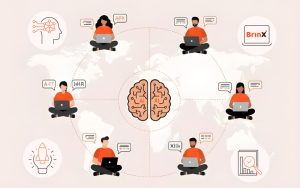A team transfers a course package between LMS environments and notices the file grows unexpectedly from 110 MB to 225 MB without a clear reason. Another teammate uploads a module, sees it stall at 62%, tries again repeatedly, and eventually gets it to load, still unsure what actually resolved the issue.
These incidents seem minor, but they accumulate and influence how L&D teams operate, especially when they start expecting that every upload may require an improvised fix.
In larger enterprises, the pattern becomes more visible because their ecosystems rest on older configuration choices, long-running customizations, and content libraries built without a single standard. Multiple authoring tools add further inconsistency, and once friction enters a system like this, it rarely resolves itself.
Most of the costs are hidden in small operational tasks that never appear in reporting. Formatting corrections, version cleanup, compatibility adjustments, and quiet delays in deployment cycles. They surface mostly in discussions about bandwidth and slipping timelines.

Where Friction Shows Up in Daily Work
Formatting is usually the first place it becomes noticeable, although it rarely appears dramatic at the start. Teams build content in one environment and then reshape it to match whatever structure the LMS will accept.
Packaging introduces another layer of variability. Different LMS versions read SCORM in slightly different ways, and a module that behaves correctly in one environment may create a tracking gap in another.
Mixed media amplifies the risk, so teams often produce multiple packages of the same course and cycle through repeated test uploads. The workflow becomes familiar, though not efficient, and the underlying inconsistency remains.
These issues surface more clearly when organizations expand their content footprint. New regions request mirrored modules, authentication rules shift, tracking permissions change, and earlier assumptions no longer hold.
Morale is affected in subtle ways because teams spend more time troubleshooting than advancing learning priorities, and over time, they begin narrowing options simply to avoid further disruption.
This narrowing sets up the next challenge, where deployment cycles start to slow under the weight of these accumulated adjustments.

How Delays Spread Through the Deployment Process
In most organizations, the slowdown begins in small places that seem manageable when viewed separately, yet they interact in ways that extend timelines more than expected. A deployment cycle that looks straightforward on paper ends up passing through several checkpoints, and each one carries its own margin of uncertainty, especially when different LMS environments interpret the same package in inconsistent ways.
Typical sources of delay include:
-
Repackaging assets for multiple LMS configurations
-
Correcting incomplete tracking after SCORM validation
-
Adjusting media resolution to meet platform constraints
-
Re-uploading modules when file paths fail during transfer
These steps look routine, but they rarely behave predictably. A team may believe a module is ready, only to learn that a single interaction fails in a regional LMS variant, which sends the file back to authoring, triggers another round of adjustments, and restarts the packaging sequence.
As these cycles repeat, content queues begin to overlap, and projects appear to stall even when development work is largely complete.
To manage expectations, teams add buffers to their estimates, which stretches timelines and reinforces the idea that production is slowing, though the actual bottleneck sits inside deployment friction.
When this pattern continues, reporting is affected as well, because delayed releases produce inconsistent data flows and make it harder to compare cohorts or track performance across periods.
This leads directly into the next set of issues, where compatibility problems become more visible once the content volume increases.

Compatibility Problems That Surface Later
Many compatibility problems remain unnoticed until an organization reaches a level of scale where earlier assumptions no longer hold, and the increase in course volume or regional variations exposes differences in how systems interpret the same content.
What once looked stable begins to reveal a set of recurring inconsistencies that are difficult to track because they do not appear uniformly across environments.
Common patterns include:
-
A module that functions in one LMS but shows broken navigation elsewhere
-
xAPI elements passing statements inconsistently across endpoints
-
Reporting values that map differently between staging and production
-
Localized versions inheriting older structural flaws
These issues are rarely tied to a single project. They tend to emerge when teams maintain mixed infrastructure, where one region operates a cloud LMS while another relies on a customized on-prem version.
Workflows then diverge, documentation lags behind, and teams begin applying fixes that solve problems in one environment while quietly creating new ones in another.
Over time, this erodes confidence in predictable deployment cycles and pushes teams to limit experimentation, which sets the stage for the operational strain addressed in the next section.

How Manual Fixes Shape the Work Environment
Manual rework often becomes embedded in daily operations because teams grow accustomed to treating it as routine maintenance rather than a structural problem, even though the accumulated effort gradually shifts attention away from the tasks that influence learning strategy and long-term program design.
When several hours are spent correcting formatting issues or rebuilding a component that behaved unpredictably during upload, that time is taken from analysis, refinement, or coordination work that would otherwise strengthen the overall learning ecosystem, and this displacement becomes more visible as organizations scale.
Typical areas that absorb the most rework include:
-
Consolidating assets across multiple authoring tools
-
Rewriting navigation rules to match older LMS templates
-
Adjusting tracking statements to align with internal reporting conventions
These activities stabilize the system but do not enhance learning effectiveness, and when they persist, team behavior adapts in subtle ways.
People become cautious with new features, limit experimentation, and shift toward risk-avoidance, which gradually narrows the system’s flexibility and sets up conditions that influence how the next stage of operational strain emerges.

How Automation Eases Routine LMS Work
Automation becomes relevant when the volume of packaging and compatibility tasks begins occupying more time than the design work itself, and the challenge is less about reducing complexity and more about containing it inside a process that behaves consistently across different LMS environments.
BrinX.ai supports this by taking a single course export and generating SCORM, xAPI, and similar formats without requiring teams to correct spacing, repackage assets, or adjust tracking behavior after each upload, and this steadiness reduces the variability that normally drives rework.
Automation also improves metadata stability, since many deployment issues originate in manifest inconsistencies that BrinX.ai standardizes before release.
As packaging becomes uniform, timelines tighten, data becomes more reliable, and teams can redirect attention toward higher-value tasks, creating the conditions for the broader operational shift covered in the next section.

How Reduced Friction Changes Daily Operations
When the underlying friction in an LMS environment declines, the broader workflow begins to operate with more stability, and teams often notice this first in the consistency of deployments across regions, since predictable packaging reduces the layers of governance that previously existed only to catch technical irregularities.
As modules behave more uniformly, library maintenance becomes steadier, and learner-facing issues decrease, which allows engagement and completion of metrics to reflect usage patterns rather than system errors.
Common shifts organizations observe include:
-
Smoother release cycles with fewer unplanned revisions
-
More consistent reporting across business units
-
Greater confidence in how localized versions will perform
These adjustments accumulate slowly but create room for teams to reconsider long-postponed questions about program design and capability pathways, setting up the final discussion on how this stability influences long-term learning strategy.

Where This Leaves the Organization
When LMS friction is reduced, the system shifts from reactive maintenance to dependable operations, and this steadiness gives teams space to make decisions based on learning needs rather than technical constraints.
Deployment becomes predictable, data arrives cleanly, and program planning no longer competes with constant troubleshooting. The change is incremental but meaningful, reinforcing a workflow where strategy can take priority again.
Explore how BrinX.ai builds instant LMS-ready packaging that supports consistent SCORM and xAPI deployment across environments.

FAQs
What is adaptive learning, and how does AI contribute to it?
Adaptive learning adjusts the experience to the performance, preferences, and speed of individual learner. By altering the trip based on real-time data analysis of what a learner clicks, skips, or struggles with, artificial intelligence improves this.
Can AI really generate full courses from raw content?
Yes. Certain AI-powered services can analyze SOPs, manuals, and slide decks to generate structured modules with assessments and objectives. Although they significantly cut down on production time, these drafts still benefit from human inspection.
How is gamification supported by AI?
AI doesn’t create game mechanics, but it sets the foundation. It structures learning into modules, which instructional designers can then gamify, adding points, scenarios, or progress indicators that motivate learners.
What’s the benefit of combining AI and microlearning?
Complex material is decomposed by AI into goal-aligned, modular building pieces that are ideal for microlearning. This facilitates the creation of brief, efficient, and time-spaced learning excursions that improve retention.
Is this approach scalable across a global workforce?
Yes. AI-assisted course development is particularly effective at scaling training in domains where consistency is crucial and source information is already available, such as compliance, product knowledge, and onboarding.
Do I need to buy a platform to use this kind of AI course builder?
Not always. Some services, like the one developed under MITR, offer course generation as a project-based model, no platform lock-in, no licenses, just a secure workflow and editable output.
Can human instructional designers still add value after AI builds the draft?
Absolutely. In fact, they’re essential. AI handle’s structure and speed; humans bring voice, empathy, and interactivity. It’s not either-or, it’s a partnership.
How secure is this process when using sensitive documents?
Best-in-class tools encrypt content, never store source material beyond delivery, and meet enterprise privacy standards. Always check for data handling policies before sharing internal content.

Soft Skills Deserve a Smarter Solution
Soft skills training is more than simply information. It is about influencing how individuals think, feel, and act at work, with coworkers, clients, and leaders. That requires intention, nuance, and trust.






